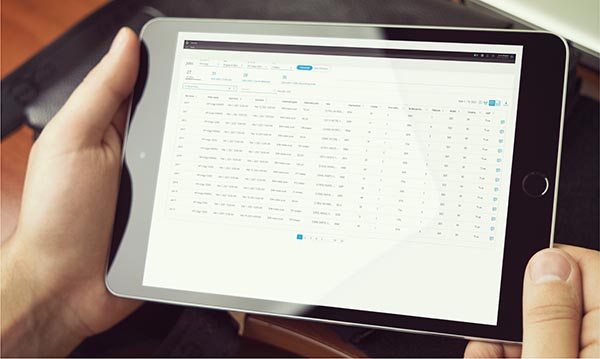One of the activities that can have the biggest impact on a print business is costing.
Job estimation and pricing are often complicated, with plenty of room for error.
Typically, quotes are led by a print expert, often using a print MIS module. To calculate the production cost, this expert estimator defines the production plan, the required resources, and the amount of each resource (for example: 1 hour of time on a specific press, 1 ton of a certain type of paper, and 5 hours of manual kitting). The total production cost is calculated based on the cost of each resource.

Having an accurate estimate is crucial for business success. Making mistakes—such as costing that is too high or too low—can have significant implications on the top and bottom lines.
The first step to improve estimations is to collect historical production data and compare the estimated costing with the actual ones.
TIP: To minimize added cost and human error, data collection needs to be as automated as possible. In fact, the best option is to utilize reports generated directly by the production equipment.
For example, one large part of the overall cost of a job is the printing itself, and the automatically generated report should include, for each job, the printing time, substrate, inks, number of copies, and more. The data can be further processed in Excel or imported directly to the MIS, but the best option is to fully automate this process by integrating the MIS and the jobs report, enabling the MIS to get each job’s information in a timely and automated manner. You can check with your press or MIS vendor to find out which integrations already exist and are ready for your use.

HP PrintOS Jobs screen capture showing job details.
Beyond the costing information, Jobs Reports can help improve operations.
For example, one of our customers identified a high correlation between using a specific substrate and a higher number of print failures—which resulted in a longer-than-estimated print time. It turned out that this substrate was low in cost but also low in quality and caused many jams and print quality issues. Jobs report data over several months made it clear that using the cheap paper was not beneficial overall, and as a result, the customer stopped using it. Without those tools in place, he would likely have had a much more difficult time identifying and correcting the problem.
Having your MIS automatically collect production floor data has many long-term advantages. In the short term you’ll be able to optimize your estimations and make sure you deliver your target margins. In the longer term, with the insights gleaned over a longer period of time, you’ll be able to identify and address weaknesses in your operation, and ensure you stay competitive.
To view the entire Workflow Chef series and other relevant sponsored content from HP Indigo, visit https://whattheythink.com/topic/hp-workflow-chef/.










Discussion
By Robert Lindgren on Apr 26, 2021
Gershon's basic assumption is that "cost" is the determinate of price and that profit is lost if the price doesn't fully reflect cost. His statement is consistent with many printer's approach to pricing, but it is fundamentally wrong. This is simply because the customers is the final judge of price because they will on will not write the check. High profit printers have always known that maximizing revenue and therefore contribution to overhead is the key to high profits. This is most likely achieved by full utilization of overhead--24/5 is their minimum goal and at the highest price that the customer is willing to pay. Obviously, this is not an exercise in cost accounting, it is an exercise in tracking hit ratios by customer and adjusting prices accordingly. It is also an exercise in focusing on the value of the project to the customer. Intelligent use of VDP or special finishing techniques create value for the customer and are a porice determinate. The object is: get as much as the customer will pay, but get the order!!
By Bob Raus on May 10, 2021
Pricing is definitely a combination of market knowledge, costs and many other factors. Capturing and comparing actual production costs to estimated costs will confirm the level of profitability, a critical factor in overall success. Automatically collecting the actual production data requires intelligent equipment and systems to capture, organize and deliver it to business systems. Automation saves labor while increasing accuracy too.
Discussion
Join the discussion Sign In or Become a Member, doing so is simple and free